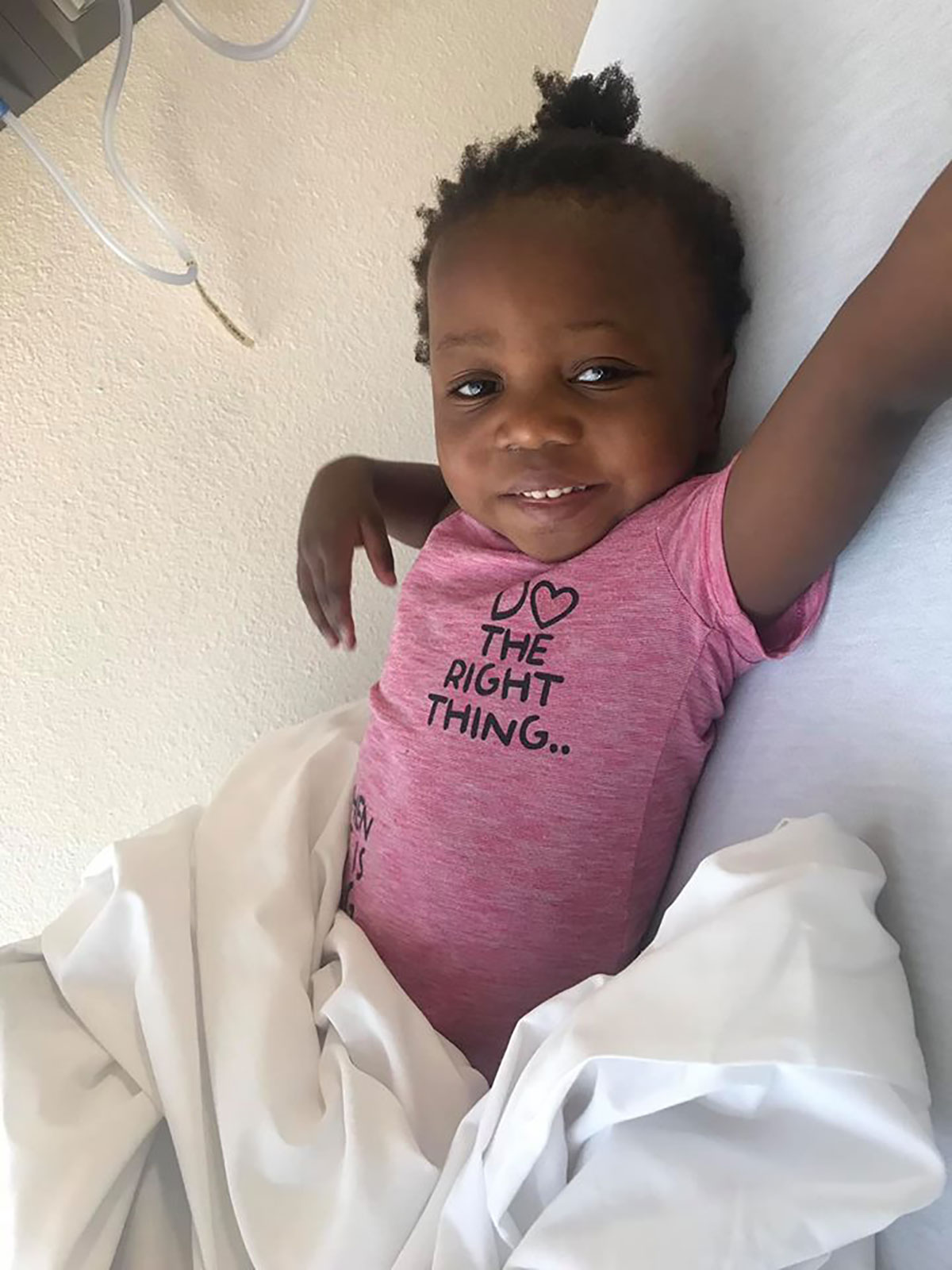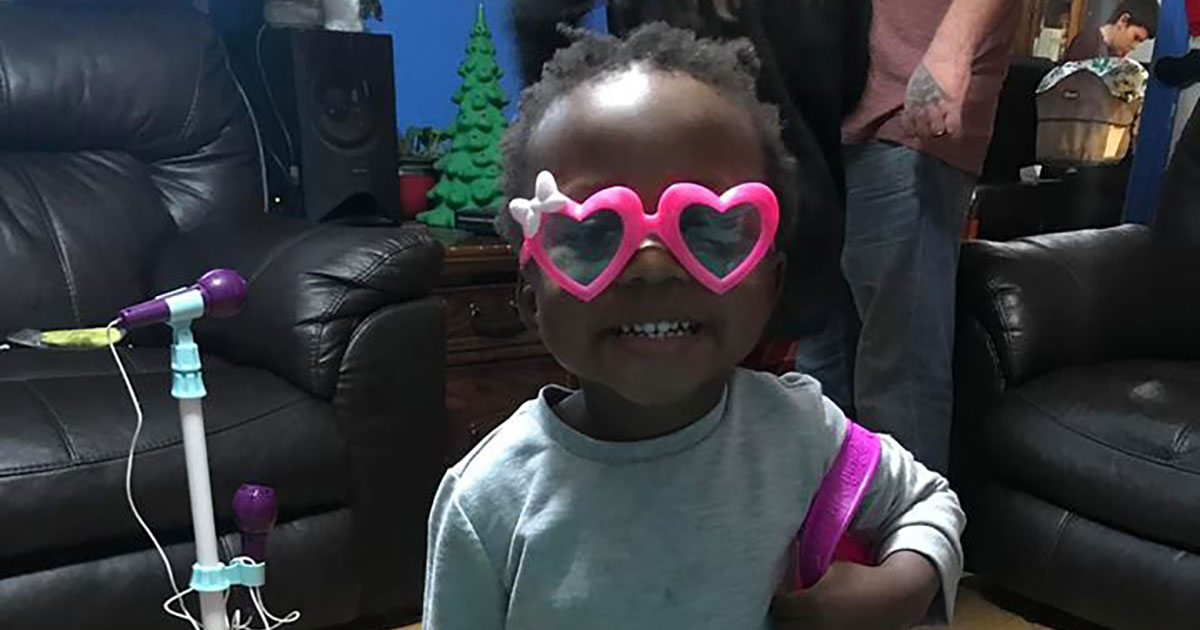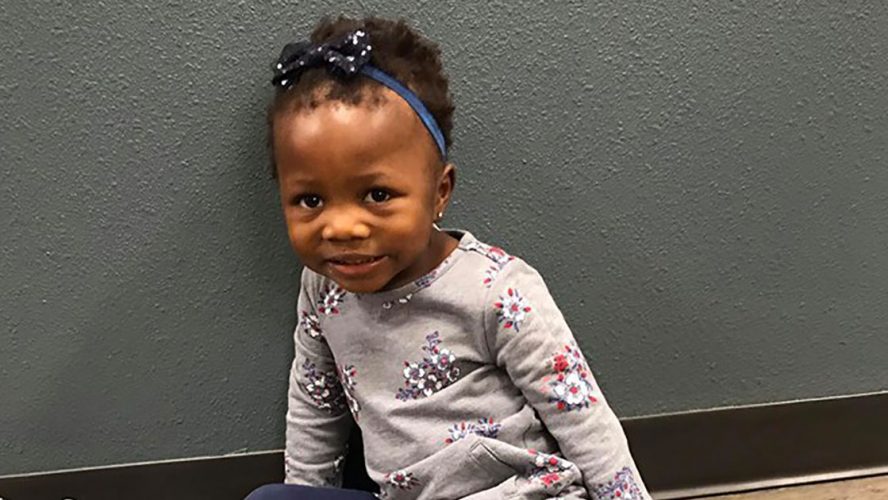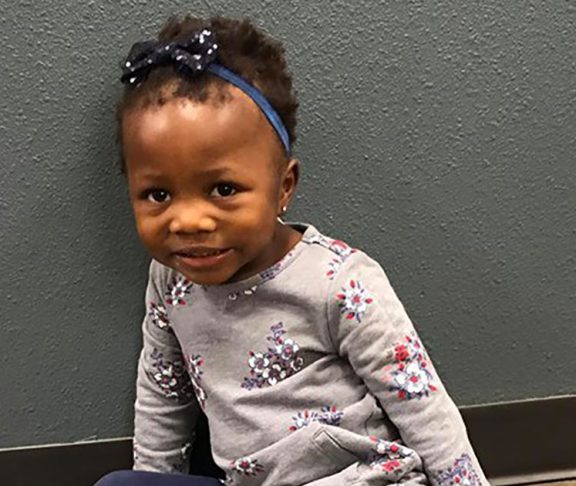For three-year-old Ruby Benevedes, sickle cell disease (SCD) has meant 27 hospitalization, 4 surgeries, and a lot of heartache. A cure through a blood stem cell transplant is within reach, but only if she finds a donor.
SCD, characterized by “C” shaped blood cells that block blood flow, primarily affects people of color, including African-Americans. SCD is an inherited disease, passed on from parents who each carry the sickle cell trait.
Ruby, who’s African-American, was adopted by a family in Lubbock, Texas. Her adoptive mother Roxey Benevedes, who already had five adopted children, now ages 9 to 16, with her husband, got a call on the day Ruby was born. Roxey’s brother called to ask her if she’d adopt Ruby – the biological half-sister of Levi, a boy his family had adopted a few years earlier. Texas law only allows families to foster or adopt up to six children and Benevedes’ brother had six children. She said yes and Ruby completed the family.
Challenges
When Ruby was four days old, she went home with her new family. Then on her one week birthday, doctors diagnosed the girl with SCD and told the family to expect many health challenges.
“It was very overwhelming finding out that she had this disease,” says Benevedes, who calls the disease “very unpredictable in every aspect.”
She was shocked when the adoption organization asked her if the family still wanted to adopt Ruby given the girl’s diagnosis. “This makes me want her even more than I already did,” says her adoptive mother.

Ruby loves princesses, enjoys swimming and jumping on the trampoline. Her mother wants Ruby to have as regular of a life as possible.
While Ruby’s had many challenges, such as being in the hospital every month during 2017 and receiving numerous blood transfusions in her young life, the little girl stays positive. She recently started attending preschool three times a week. During an interview for this article, the youngster sang a song she learned at school.
A donor for Ruby
Ruby takes five medicines a day and has a port for injections. If she gets a 100.4 or higher fever, she needs to go to the hospital.
In January 2019, she had her spleen removed because the misshaped sickle cells had clogged the organ. A month later, the family met with doctors about next steps.
“The only cure for sickle cell is a blood stem cell transplant,” says Benevedes.
Now the search is on for a genetically matched donor for Ruby. Her best hope is finding a donor from her family or someone from an ethnic background. Her half-brother Levi was tested but he was not a match.
“Because of her ethnicity, she only has a 23 percent chance of finding a match,” says Benevedes.
Be The Match
The Benevedes family is working with Be The Match®, an organization operated by the National Marrow Donor Program®, that matches patients battling blood cancer and other blood disorders with donors.
The family regularly posts updates on a Facebook page for Ruby. The girl even passes out business cards advertising how she needs a donor.

They’ve also been hosting donor drives in their community to encourage people, especially people of color, to sign up to be tested as a potential match for Ruby or anyone else who needs a match.
Getting registered is free and easy. Would-be donors swab their cheek, send it to be tested and are added as a possible donor to the registry. If a match is made, the donor would be asked to either donate blood-forming stem cells collected from the circulating blood, or from bone marrow, depending on what is best for the patient.
“I know there has to be a match out there for her,” Benevedes says. “It’s just a matter of reaching those people and getting them swabbed and in the system.”
She encourages everyone to sign up.
“Ruby’s best chance of getting a cure and finding a match is somebody of her same ethnicity,” she says. “They could save her life or somebody else’s.”



